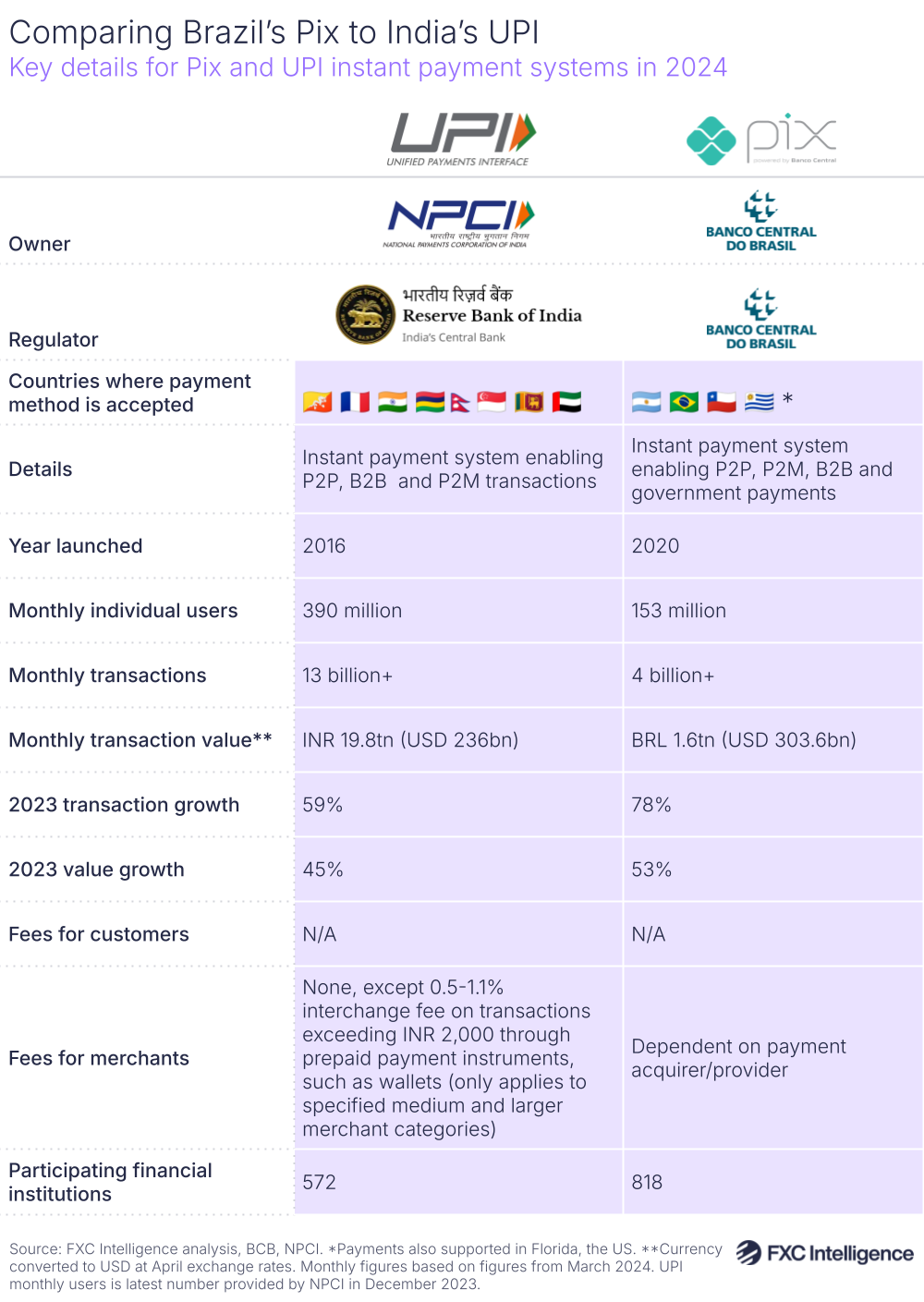Earlier this year, we took an in-depth look at two instant payment systems that have seen a good deal of success in their own countries: India’s Unified Payment Interface (UPI) and Brazil’s Pix. This week, we’ve taken a closer look at how these payment methods compare, including their cross-border capabilities.

While UPI is a decentralised payment system owned by the non-profit National Payments Corporation of India (NPCI) and regulated by the Reserve Bank of India, Pix is a centralised system owned and regulated by the Banco Central do Brasil (BCB), which has mandated its adoption amongst Brazilian financial institutions.
However, there are also similarities between UPI and Pix. Both systems are aimed at increasing access to digital payments, as well as removing intermediaries from transactions to speed up payments and make them less costly for merchants. They have also seen rapid adoption in their countries, though Pix appears to have been adopted faster across its population – as of March 2024, roughly 70% of Brazil’s population had used Pix since it launched in 2020 while a December 2023 update suggests 28% of India’s population has used UPI since its launch in 2016.
Pix is still catching up to UPI when it comes to certain features, including cross-border expansion. NPCI’s international payments division has signed agreements to enable merchant acceptance of UPI in countries including Singapore, Sri Lanka, Mauritius, Bhutan, the UAE and France. Meanwhile, Pix’s infrastructure is not currently set up to enable instant cross-border payments. However, PagBrasil, a payment collection agent for Pix, has partnered with the BCB and other banks to enable payments in several countries, including Uruguay, Argentina, Chile and the US state of Florida.
The rapid adoption of Pix and UPI amongst consumers shows the demand for these systems and their potential across borders, particularly in UPI’s case. It also highlights that government mandates and encouraging open adoption by participants across the payments space have been crucial for driving adoption.


